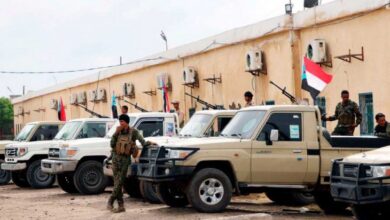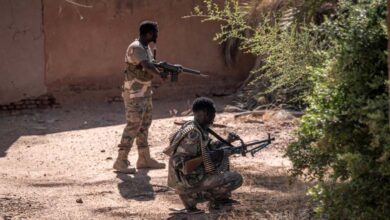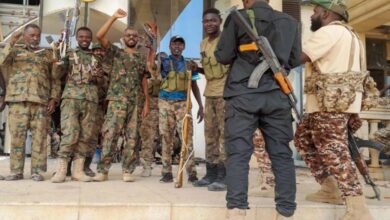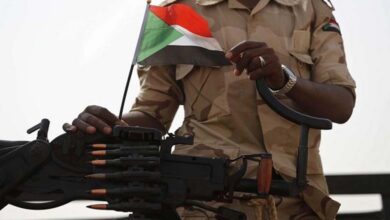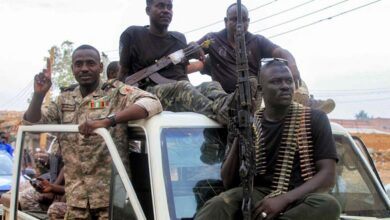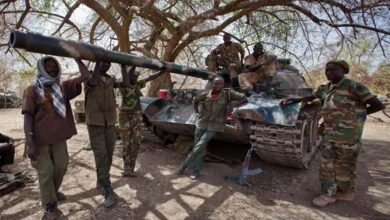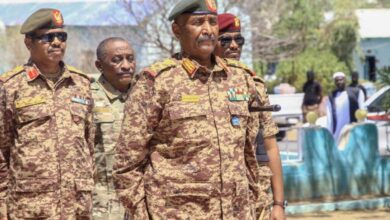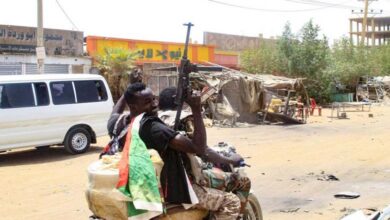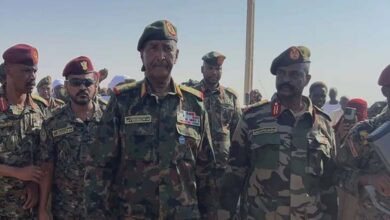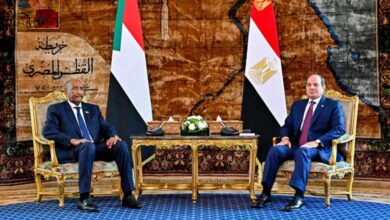Tehran in the Sudan War: Who Loses and Who Wins?
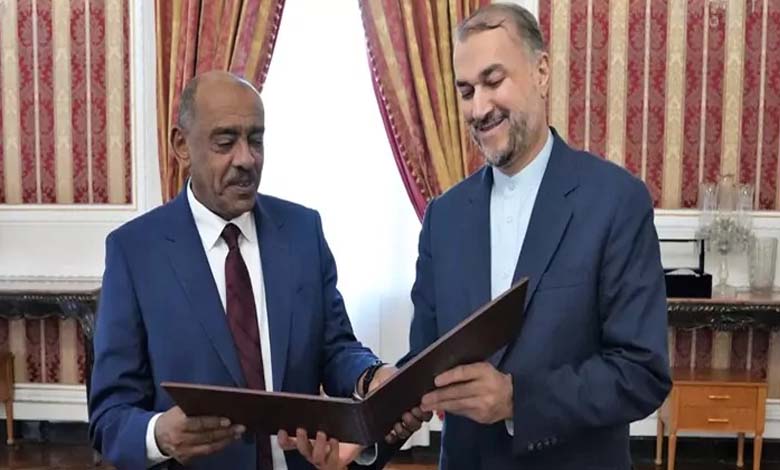
The history of Iran’s relationship with Sudan didn’t start today but goes back to the eighties of the last century when Khomeini ascended to power in Tehran. He was regarded by proponents of political Islam in the Arab region as a victory for them. Among these groups was the “Muslim Brotherhood” in Sudan, or locally known as the “Islamic Movement”, where its members at the University of Khartoum constituted the largest active cell for promoting the ideas of the new Iranian regime and distributing its leaders’ manuscripts in the university’s corridors. Some even embraced the Shiite sect, which was strange to the Sudanese people.
The relationship evolved after the group seized power in Sudan in the June 30th, 1989 coup, which marked the beginning of open hostility towards Arab countries, especially the Gulf States, and explicitly adopted the Iranian discourse towards those countries. Cooperation ties with Tehran were established, culminating in cooperation in the field of military industries, leading to the establishment of the current defense industries system, especially the Al-Yarmouk arms factory, which was targeted by Israeli missiles in October 2012. However, international pressure and local protests forced the regime to cut those ties in January 2016 following the attack on the Saudi embassy in Tehran. However, many considered the decision to sever ties as a formal step taken by the government, while the Islamist organization continued to maintain communication channels with the Iranian regime through a narrow internal circle, making the declaration of cutting ties merely a formality to end the Sudanese-Iranian military cooperation, dating back to the eighties of the last century, and make it invisible.
At the beginning of this year, direct evidence of Iranian involvement in the raging war in Sudan has multiplied, fueling local, regional, and international concerns that the Sudan war could turn into a proxy war and become part of the conflict in the Red Sea.
In the first week of January, the “Rapid Support Forces” announced the downing of an Iranian drone of the “Mohajer 6” type, considering it as evidence of Iranian support for the Sudanese army. A few days later, Bloomberg reported that Western officials said Iran had supplied the Sudanese army with “Mohajer 6” drones qualified for surveillance and explosive transport.
The agency confirmed that satellites had taken pictures of an Iranian “Mohajer 6” drone at the Wadi Seidna base, north of Omdourman, under army control.
Three Western officials, whose identities were hidden, told the agency that “Sudan received shipments of Mohajer 6 drones, single-engine drones manufactured in Iran, carrying guided munitions.” Military battles in the Omdourman area showed the presence and participation of Iranian drones on the battlefield, which resulted in the army taking control of the radio and television headquarters.
After that, media reports confirmed that Tehran was supplying the Sudanese army with various weapons, most notably “Mohajer” drones. During the visit of the former Foreign Minister, Ali Al-Sadiq, to Tehran, he reportedly presented a “package of demands” for arms supplies, but these reports mentioned Iranian reservations fearing that these weapons might fall into Israeli hands due to normalization relations between it and Khartoum. Therefore, Tehran proposed to send them with advisers. Later, in March 2024, there were reports of an Iranian request to establish a military base on the Sudanese coast in the Red Sea in exchange for continued arms supplies. It was said that Khartoum did not agree to this, but rumors persist about the refusal, given the continued flow of Iranian weapons to Sudan.
On April 12th last year, the U.S. delegate to the United Nations and the Security Council, Linda Greenfield, revealed in statements reported by Reuters that her country had held direct talks with countries accused of fueling the conflict in Sudan, urging regional countries to press Iran to cease its intervention in the Sudanese war. This necessarily means that Iranian presence is now registered in international mechanisms and is difficult to ignore through denial and reassurance statements that have characterized the government of Port Sudan since Sudanese army chief General Abdel Fattah Al-Burhan announced the restoration of relations with Tehran and his meeting with Iranian President Ibrahim Raisi on the sidelines of their participation in the emergency Arab-Islamic summit held in the Saudi capital in November last year, followed in February 2024 by the first official visit of the then Foreign Minister, Ambassador Ali Al-Sadiq, to the Iranian capital, Tehran.
Iran’s Objectives: The Sudan War as an Opportunity
The outbreak of war in Sudan on April 15, 2023, presented a favorable opportunity for Iran to regain its influence in Sudan, given its strategic importance. During the era of the “Muslim Brotherhood” government, Sudan remained one of the main conduits for Iranian arms to extremist organizations it sponsors. Additionally, its position on the Red Sea, a region in a state of war, and its geography bordering Saudi Arabia and adjacent to the Arab Republic of Egypt, the two biggest opponents of Iran’s project in the region, make it a crucial player.
Under the “Muslim Brotherhood” regime, which was overthrown by the peaceful popular revolution in 2019, Sudan served as the spearhead for its policies aimed at destabilizing the region and muddling the political landscape. With the current conflict and the looming threat of war with Israel, Iran must consider extending support to the Muslim Brotherhood in Sudan to bring them back to power to regain its influence and use that influence as leverage against its adversaries in the Arab region. This is one of the tactics of the political Islam project upon which Iran relies.
Iran’s objectives in its intervention in the Sudanese war can be summarized into three main points. Firstly, it is to demonstrate the superiority and effectiveness of its military industries. The war in Sudan serves as a showcase for promoting and marketing the quality of Iranian military equipment on the battlefield.
Secondly, it is to block Sudan’s new direction towards normalization with Israel and signing the “Abraham Accords” by enabling its allies in radical Islamist currents to access power. This could allow these groups to take the lead in the political scene and increase their influence in the future if the war ends with a military or political victory for the army and the groups supporting it.
The third objective of Iran’s presence in the Sudanese war theater is tactical. Sudan is not within Iran’s strategic influence sphere politically or religiously, compared to other Arab areas such as Iraq, Syria, Lebanon, and even recently Yemen. Additionally, it is one of the Islamic countries where Shi’ism is not widespread, and it represents a strategic challenge for Egypt and the Gulf States in confronting the Iranian project. Therefore, one cannot ignore the fact that some of Iran’s actions in Sudan since last October are aimed at strengthening its presence and focusing on the Red Sea coasts, where its allies are currently tightening their grip on their Houthi allies in Yemen.
Al-Burhan’s Contradictions:
Iran’s decision to resume relations with Sudan faces several complications, foremost among them being that Sudan’s current inclinations differ from those of the past. The head of the army, General Abdel Fattah Al-Burhan, was behind the official normalization measures with Israel and met with Israeli Prime Minister Benjamin Netanyahu under Ugandan auspices in Entebbe in February 2020. This raises a fundamental question about Tehran’s ability to achieve its objectives by participating in the current war in Sudan. It is therefore plausible that Tehran has obtained certain assurances from the Muslim Brotherhood organization, with which it has strong ties and significant influence within the Sudanese army, to replace the general once the war is over, or that the general has made a 180-degree turn in his foreign policy, which is more likely.
The Danger of Support:
Support for any party in the war represents a significant shift towards the conflict becoming a proxy war for regional and international actors as part of a power struggle in the region. This prolongs the duration of the war in Sudan. Therefore, it is essential to limit the international and regional impact that supports the continuation of the war and to pressure for a cessation of hostilities. Fundamentally, it is imperative to isolate the “Islamic Movement” and the “National Congress” from influencing the army command to avoid these organizations, which contributed to the collapse of the state with their ambitions to return to power, from re-establishing their regional and international alliances based on contradictions in the region. It is well known that the radical extremist project of the Islamic movement relies on the support of the Islamic Republic of Iran for its allies in the region, primarily by creating instability in several areas.
After a year of war in Sudan, it is evident that the parties are actively seeking support to continue the conflict. This prompts many parties to exploit this situation to achieve various interests, whether through the exploitation of Sudan’s resources or by seeking to consolidate their political influence. This means maintaining the conditions that ensure the continuation of the war in Sudan according to scenarios that keep the state in a state of fragility and instability.
The International Stance:
The international and regional stance requires a clear strategy to deal with the situation in Sudan, focusing primarily on the issue of the Islamic Movement and the National Congress. The danger of restoring their regional alliances and their influence on the war is related to regional issues such as the security of the Red Sea and the Israeli-Palestinian conflict. Indeed, the war in Sudan is more influenced by external factors than internal ones. It is therefore more closely linked to what is happening in the region and international developments, being part of the struggle for power in the region and conflicts over projects in the Middle East.
Regional developments in the Israeli-Palestinian file also impact the Sudanese issue, notably through Iran’s influence on the war in Gaza and its indirect link to the Islamic movement. Therefore, Iranian intervention is one of the most dangerous forms of intervention in this war, the parties to which are interconnected and whose objectives are intertwined.


